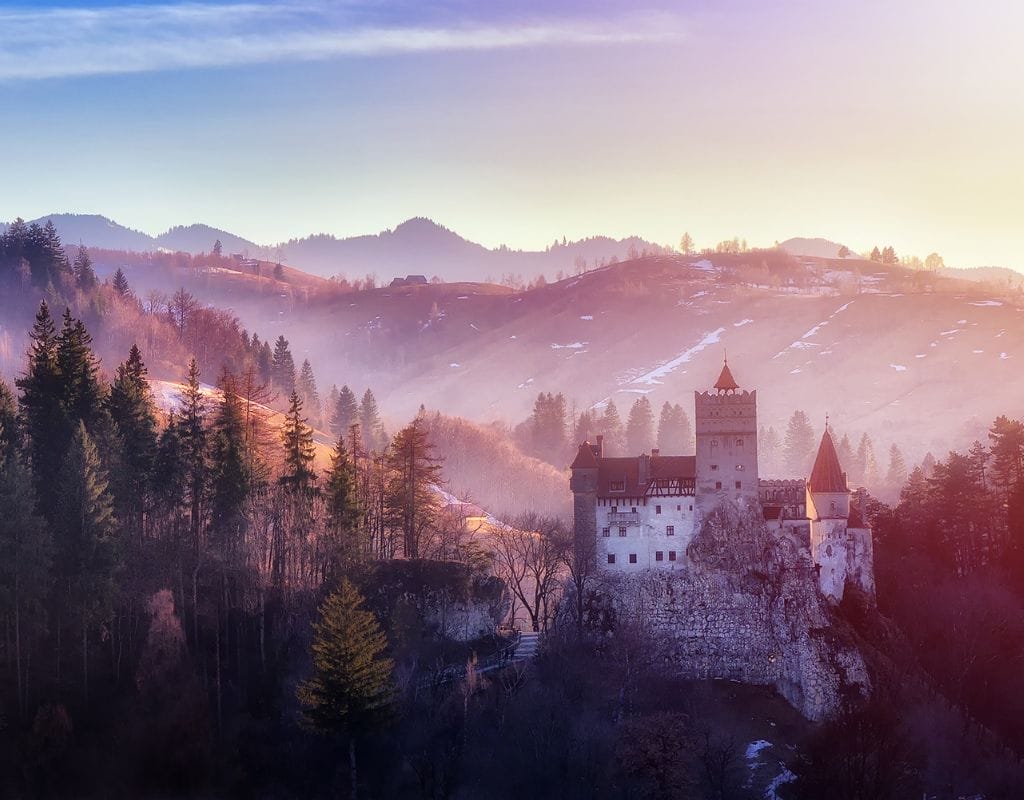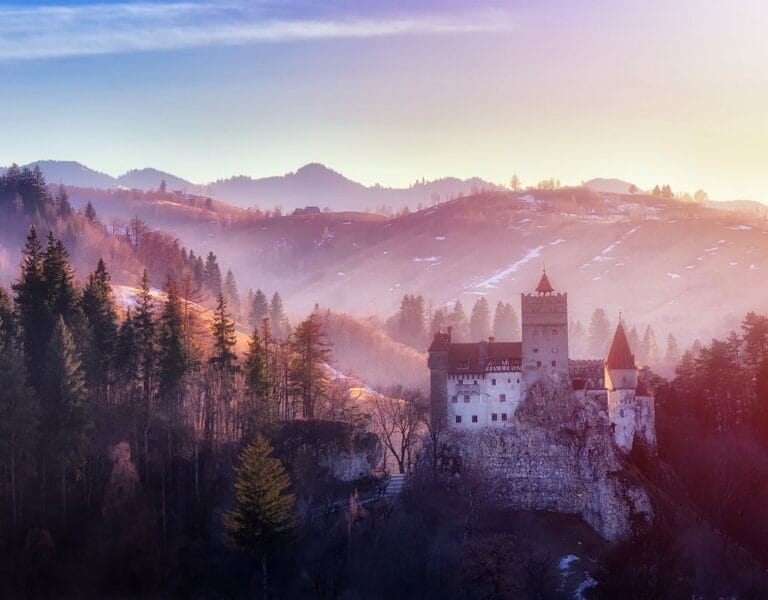Discovering Bran Castle: A Travel Guide
Bran Castle, often associated with the legend of Dracula, stands on the border between Transylvania and Wallachia, Romania. Perched atop a 200-foot-high rock, this imposing structure offers breathtaking views and a journey into the heart of medieval myths and history. Bran Castle provides a captivating blend of historical intrigue and Gothic allure for educated American travelers seeking to explore the mysteries and architectural marvels of Europe.
History and Significance
Initially built in the 14th century to protect against invaders, Bran Castle has served various roles, from fortress to royal residence. It’s most famously linked to Vlad the Impaler, the inspiration for Bram Stoker’s Dracula, although the historical connection is more myth than reality. Despite this, the castle symbolizes Romania’s rich medieval heritage and is a testament to centuries of history.
What to See
- The Castle’s Interior: Explore the many rooms and corridors of Bran Castle, each telling a part of Romania’s royal and cultural history, adorned with period furniture and artifacts.
- The Secret Passage: Discover the hidden stairway that connects the first and third floors, a testament to medieval architectural ingenuity.
- The Castle Grounds: Wander the castle’s gardens and park, enjoying the serene landscape and the traditional Romanian market where local crafts and foods are available.
Activity by GetYourGuide
Exploring the Surroundings
The region around Bran Castle is known for its natural beauty, including the Bucegi Mountains and Piatra Craiului National Park. Nearby, the town of Brașov offers Gothic, baroque, and Renaissance architecture alongside vibrant cafes and historical sites.
Personal Tips and Insights
- Best Photo Spots: The castle’s eastern side offers the best views for photography, especially in the morning light.
- Special Events: Bran Castle hosts various events throughout the year, including Halloween parties that play up the Dracula theme.
Legends and Stories
While Bran Castle is often marketed as “Dracula’s Castle,” its connection to Vlad the Impaler is tenuous at best. However, the castle embraces this legend, offering visitors a glimpse into the myths that have shaped perceptions of this historic site. The real story of Vlad the Impaler, a ruler known for his brutal tactics against his enemies, adds a layer of historical intrigue to the castle’s fascinating past.
Conclusion
Bran Castle is more than just a tourist destination; it’s a journey into the heart of Romanian history and folklore. Whether drawn by the legend of Dracula or the allure of medieval architecture, visitors will be captivated by the castle’s Gothic beauty and the stories within its walls.



